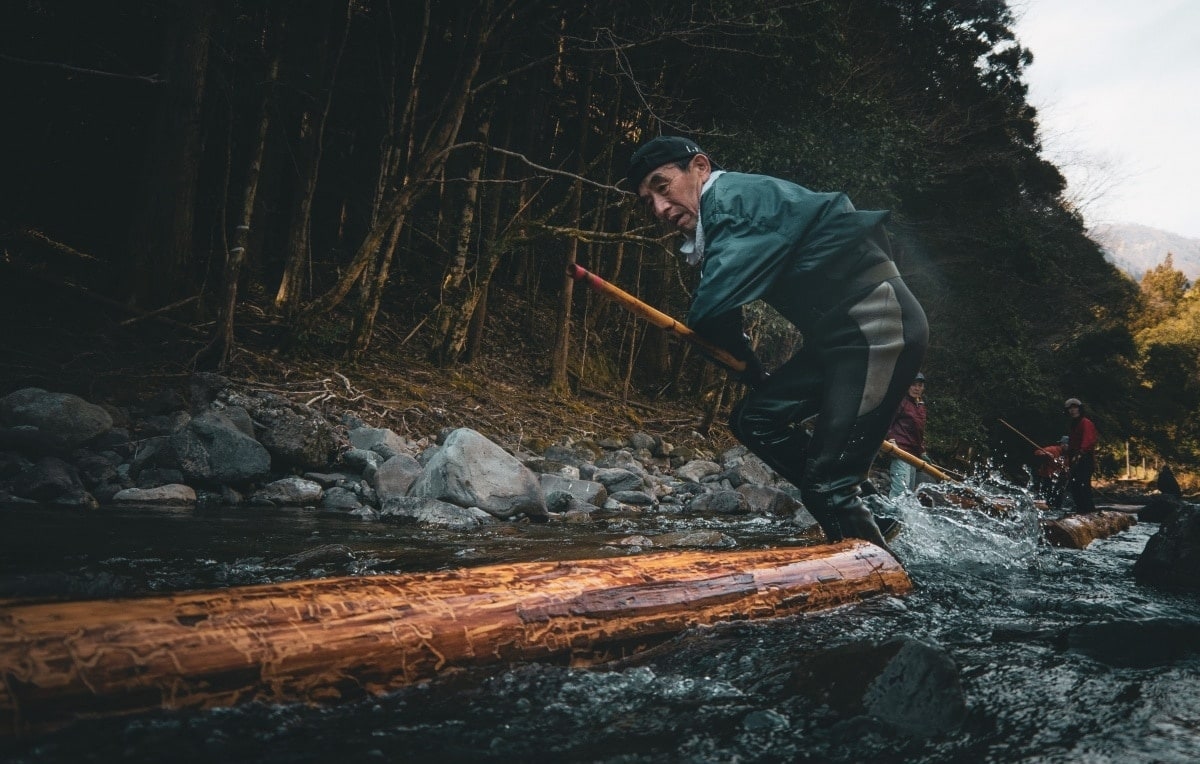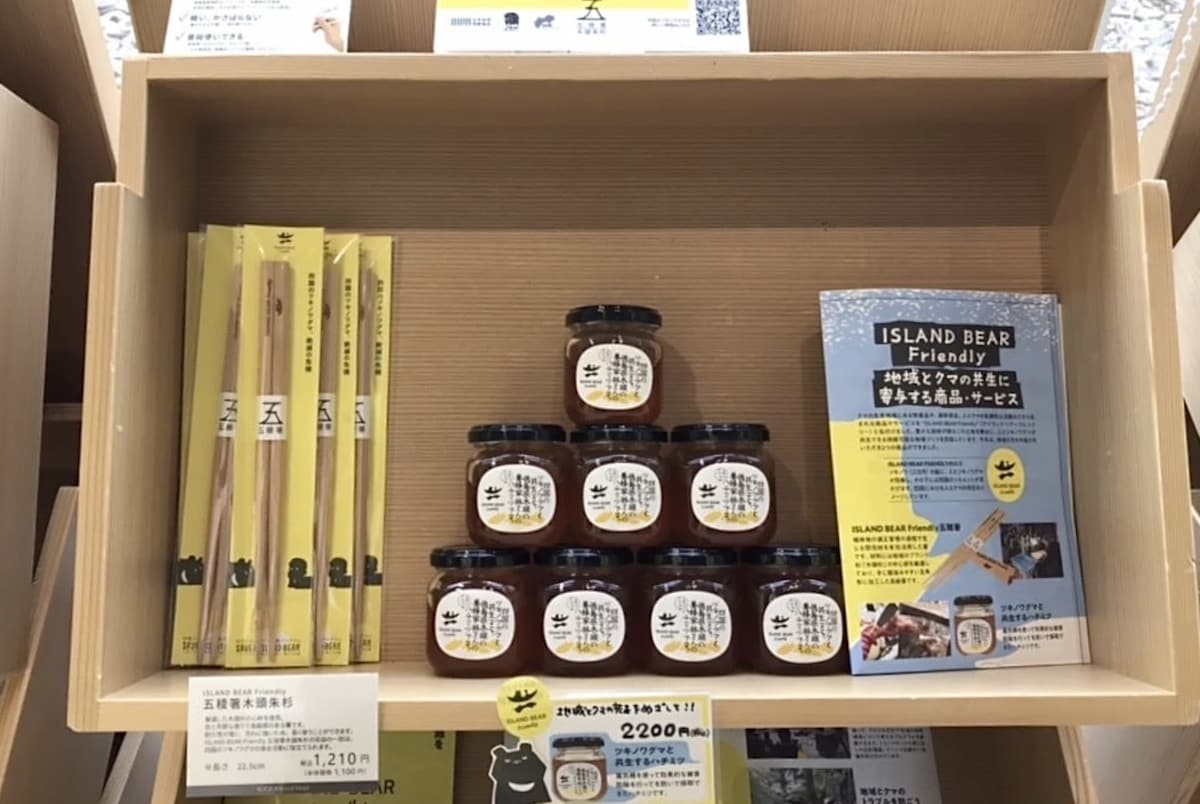The Isolated Attractions of Shikoku's "Tibet"
Kito Village, Naka Town, Tokushima Prefecture
Tucked away deep in the valley at the foot of Mt. Tsurugi--“the Tibet of Shikoku”--the village of Kito is home to deep green cedar plantations and a wild river of vivid blues.
Saving Shikoku's Black Bears
One of Shikoku's last remaining Asian black bears eating the honey bait set in order to capture sensor camera footage and monitor the population. Credit: Shikoku Institute of Natural History
Kito is also home to a conservation organisation that uses the village as a base for fieldwork, and collaborates with KITO Design Holdings and other local stakeholders in order to protect a very special animal. Some 20 Asian black bears the surrounding mountains their home. NPO Shikoku Institute of Natural History has been keeping tabs on this critically endangered population of bears for 19 years, climbing the steep slopes around Kito to check sensor cameras and hair traps. They recently kickstarted the "Island Bear" campaign to heighten awareness about Shikoku's bears.
The bear’s struggle to survive is closely linked to the history of the forestry industry in this area. Bears (and many other animals) need native deciduous forest to survive. But in the latter half of the 20th century, much of the native forest was cut down and replaced with cedar and hinoki plantations to supply timber for the housing industry at the time. Today, only 35 percent of Shikoku’s native forest remains, just 3.8 percent of the island’s land.
The Necessity of a Healthy Forest

The traditional method of transporting logs down the river is still celebrated in a local festival usually held in August (on hiatus during the pandemic). (AF)
The Institute believes that Kito’s revitalisation is tied directly to the bears’ conservation. As one of the NPO’s bear experts Kyohei Ando says, it’s not just economic revitalisation that needs to be considered, but cultural and natural revitalization are also important. In collaboration with local enterprises, they have created a lineup of special “Island Bear” products, including honey from a local beekeeper and chopsticks made by Wood Head, a local company whose goal is to showcase the culture of Kito. They hope to use wood from Kito’s abandoned cedar forests to make specific wooden products, as opposed to selling raw timber.
Shikoku Institute of Natural History hopes to start nature tours to show sightseers the natural beauty of Kito and its surroundings; the native forest which can sustain a bear population.Though it will be a big job, the NPO and other local stakeholders hope to see the plantations replaced with native forest in the long term, restoring biodiversity to the area.

"Island Bear" promotional products include locally made honey and cedar chopsticks. (SINH)
With “Island Bear” as the symbol of Kito’s nature, and a range of creative small businesses breathing life back into the village steeped in ancient culture, Kito’s revitalisation is promising. It may take time and effort, but with the accomplishments of the award-winning convenience store and up-to-the-minute promotional marketing, one can’t help but be instilled with a sense of hope.
Next time you visit Shikoku, why not discover the “Tibet of Shikoku”?
The beginnings of autumn colors on the "Supa Rindo" ("Super Forest Road") above Kito. A popular spot for viewing autumn leaves and driving motorcycles.
Photo credits:
Alrik Falle and Tyler Walkey/Kito Design Holdings https://kito-dh.j
Shikoku Natural History Science Research Centre http://www.lutra.jp/
Eli Sooker https://elisooker.com/




